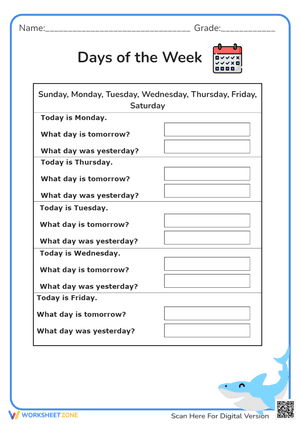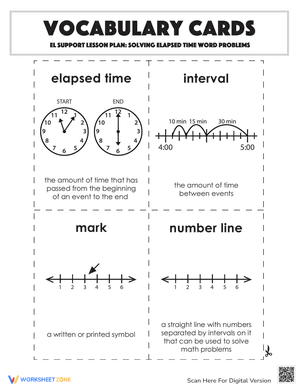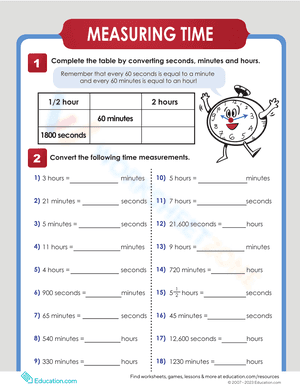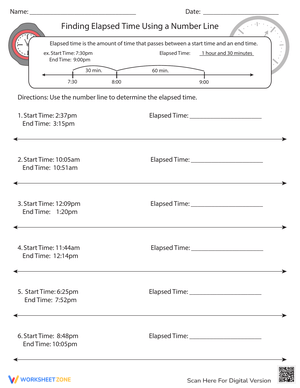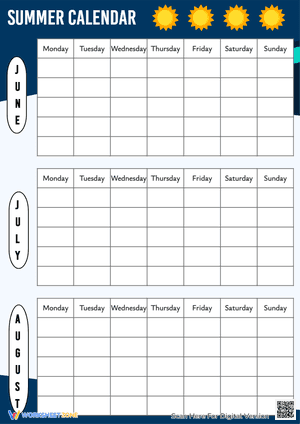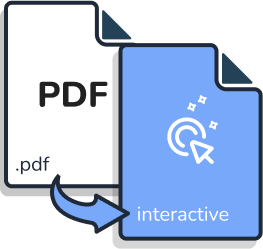We may now take telling the time for granted, but this wasn't always the case. One of the first lessons for kids is how to tell the time, a skill we use every day. Math time worksheets assist kids in developing a deeper comprehension of how time functions and how it affects our daily lives.
Some children can read a clock before they even start school, while others need some practice. Youngsters' telling time worksheets are the best way for kids to learn how to tell time and decipher a clock.
Reading a clock is one of the most vital skills for kids and they can master this skill with the support of telling time worksheets. These worksheets are the ideal resource for learning and comprehending the various aspects of clock reading.
Benefits of Telling Time Worksheets
With regular practice, reading a clock becomes simple, but some readings, such as quarter past and half past the hour, can still be challenging for pupils. And telling time worksheets can be useful in this situation. Students may simply learn how to read the time with the aid of various tools, such as clock graphics and instruction in these math worksheets.
Students can use telling time worksheets to learn how to read the time on a clock and to better grasp concepts like months, years, leap years, weeks, etc.
Understand time concepts early on
Children in grades 1, 2, and 3 learn critical time concepts with time-telling worksheets. Time telling is a skill that is useful in both math and real-world situations. Time worksheets encourage kids to practice reading, writing, and calculating time using a variety of tools and methods.
Grasp incremental learning
The majority of time worksheets take a step-by-step approach to teaching time and clock ideas. They become adept at reading the seconds, minutes, and hours of hands-on analog and digital clocks. Additionally, they learn about relevant subjects like day, month, year, and week. Time-telling worksheets for grades 1 through 3 provide a gradual introduction to time learning that makes it easier for kids to understand complex concepts.
Engage in enjoyable and innovative learning
Time games, activities, puzzles, and riddles are included in time worksheets to make learning enjoyable and interesting. Children who need to interpret the fundamental time units to develop higher-level thinking skills through engaging in fun and creative activities. These exercises also help the child's thinking skills develop. Online time worksheets provide a great environment for learning and fruitful interaction.
Boost general development
Every child should be able to tell the time, but completing online time worksheets can also aid in the development of their mathematical, cognitive, and motor skills. Online time worksheets for grade 1 help children understand ideas more quickly and simply by introducing time to them early on.
Improve time management
It's important for kids to learn time management skills because they'll be useful throughout their life. Young children learn numbers and time management through the use of time worksheets.
Read time on different types of clocks
Kids who complete time-solving worksheets gain confidence in their ability to tell the time on both digital and analog clocks and practice telling the time on a variety of clocks. Online time worksheets teach kids how to manually calculate time as well.
What telling time worksheets can help kids in each grade?
The comparison of time units (seconds, minutes, and hours) and time telling and reading are all covered in time worksheets. Elapsed time, am/pm, days of the week, and reading calendars are issues with time worksheets for higher grades.
- Children start learning how to tell the time in the first grade, both the half-hour and to the full hour. Time problems for both analog and digital clocks are included in the grade 1 time worksheets.
- Time worksheets in the second grade assist students in reviewing telling time to the half-hour and the full hour as well as in learning to tell time to the quarter-hour and five-minute intervals. On the worksheets for drawing hands, there are images of clock faces. The concepts of the days of the week and the months of the year are also covered in the worksheets.
- Children learn to tell time to the nearest five and one minutes on the third-grade time worksheets. The word questions for telling time from analog clocks and drawing hands-on clock faces are included in the time worksheets. Children study how to read a calendar, write dates, and convert time units.
- The majority of the word problems with time estimation and rounding off, converting units of time, and elapsed time are found in 4th grade time worksheets.
The Fundamentals You Should Teach about Time
It could take some time to understand the concept of time. However, if you explain how to tell the time in a logical way, your kids can pick it up with some practice.
24 Hours in a Day
Explaining to young kids that there are 24 hours in a day will be the first step in helping them understand time. Describe how the day is split into two half of 12 hours each by the clock. Additionally, there are 60 minutes in an hour.
You can use the difference between 8 o'clock in the morning, when kids are getting ready for school, and 8 at night, when people typically go to bed, as an illustration. Use a toy clock or another teaching tool to demonstrate to the pupils what an actual clock looks like at 8 o'clock. Find out the description of the clock from the kids. Then ask them what they notice about the clock.
Hands-on a Clock
Children should be told that a clock has two main hands and a face. The smaller hand should represent the hour of the day, and the larger hand should represent the minutes inside that hour, as the teacher should illustrate. Children should have an easier time understanding that each number on the clock represents a 5-minute increment if they have already mastered the idea of skip counting by fives.
Describe how the number 12 at the top of the clock means ":00" and how it signifies both the start and finish of the hour. After that, instruct the class to skip count from 1 to 11 using the numbers on the clock. Describe how minutes are represented on a clock by the tiny hash marks between the numbers.
Recall the 8 o'clock example. Describe how "o'clock" refers to 0:00 or zero minutes. The easiest way to teach toddlers to tell time is typically to begin with greater steps, such as having them simply recognize the hour, then the half-hour, the quarter-hour, and finally intervals of five minutes.
Worksheets for Learning Time
Students can start honing these skills by attempting to tell the time on a variety of clock worksheets once they have a basic understanding of how the minute hand indicates to the 60 distinct minutes around the clock face and the little hour hand depicts the 12-hour cycle.
- Blank clocks worksheet
- Telling time to the nearest 5 minutes
- Telling time to the nearest minute
- Fill in the digital times for analog clocks
- Miscellaneous time worksheets
FAQs about time telling worksheets
When should my child begin learning how to tell time?
You can begin teaching your child to read an analog clock somewhere during the first grade when they are around 6 or 7. Sarah Miller, a teacher with a degree in education and more than ten years of experience, believes that children at this age are starting to comprehend the passage of time and the notions of past, present, and future. Additionally, children at this age possess the mathematical abilities required to understand an analog clock.
It takes time to become an expert time-teller. Time telling to the hour and a half is something that first graders can learn. By the second grade, you can start working on telling time to the nearest five minutes and, if they're ready, even to the minute. It may take till the age of eight to perfect telling time to the minute.
What kinds of Clock Worksheets are there?
Preschool clock worksheets, kindergarten clock worksheets, analog clock worksheets, digital clock worksheets, etc. are a few examples of the various clock worksheet types.
Conclusion
It's crucial that kids learn how to tell the time. They will use this skill on a daily basis for the rest of their life. To help them better manage their time, students should learn all the fundamentals of telling the time in primary schools.
They must regularly practice the telling time worksheets and questions in order to reap the greatest benefits.
